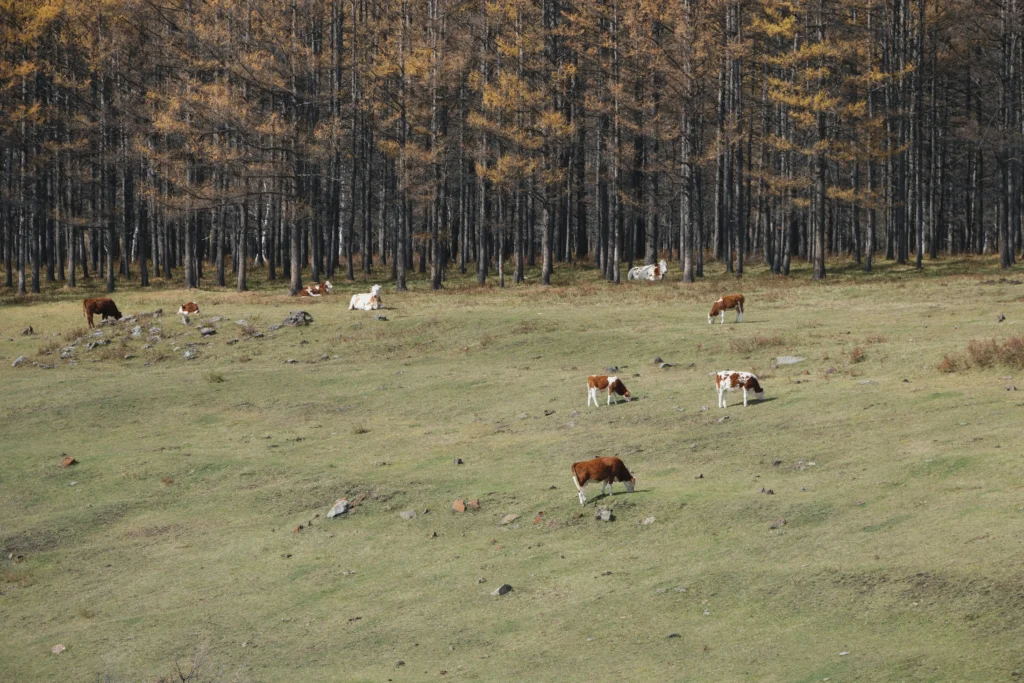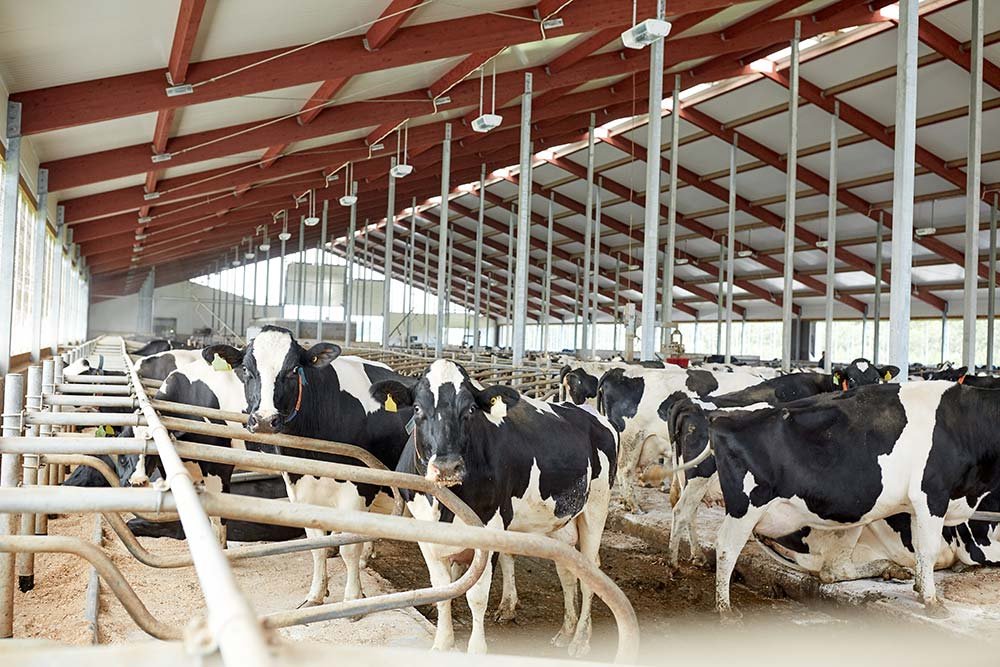
Bovine Respiratory Disease (BRD):
BRD is a complex respiratory disease caused by a combination of viral and bacterial agents, often exacerbated by stress factors such as transportation or overcrowding.
- Symptoms: Coughing, nasal discharge, fever, difficulty breathing, decreased appetite, depression.
- Treatment: Antibiotics to control bacterial infections, anti-inflammatory drugs to reduce inflammation, supportive care (rest, proper nutrition, hydration), isolation of sick animals to prevent spread, vaccination for prevention.
Bovine Viral Diarrhea (BVD):
BVD is a viral disease that can cause diarrhea, fever, respiratory distress, and reproductive issues in cattle. It can be particularly dangerous for pregnant cows, leading to abortion, stillbirths, or the birth of weak calves.
- Symptoms: Diarrhea, fever, nasal and ocular discharge, respiratory distress, reproductive issues (abortion, stillbirths, weak calves), immunosuppression.
- Treatment: Supportive care to manage symptoms, vaccination to prevent infection, biosecurity measures to prevent transmission, identification and removal of persistently infected (PI) animals from the herd.

Johne’s Disease:
Johne’s disease is a chronic bacterial infection caused by Mycobacterium avium subspecies paratuberculosis (MAP). It primarily affects the intestines, leading to diarrhea, weight loss, and decreased milk production. Once established, it can be difficult to eradicate from a herd.
- Symptoms: chronic diarrhea, weight loss despite normal appetite, decreased milk production, weakness, and lethargy.
- Treatment: There is no cure for Johne’s disease. Management strategies include strict hygiene measures to reduce transmission, culling of infected animals, and maintaining a closed herd to prevent the introduction of infected animals.
Mastitis:
Mastitis is an inflammatory condition of the udder, usually caused by a bacterial infection. It leads to swelling, heat, redness, and pain in the affected udder quarters. Milk may appear abnormal, containing clots or pus.
- Symptoms: swelling, heat, redness, and pain in the udder, abnormal milk (containing clots, pus, or blood), decreased milk production, fever.
- Treatment: antibiotics to control bacterial infection, anti-inflammatory drugs to reduce inflammation, supportive care (such as frequent milking, applying warm compresses), maintaining proper udder hygiene, and identifying and addressing underlying causes (e.g., improper milking techniques).

Bovine Leukemia Virus (BLV):
BLV is a retrovirus that can cause persistent lymphocytosis and leukemia in cattle. It spreads through infected blood, often during close contact or through contaminated needles. While many infected cattle remain asymptomatic carriers, some develop tumors, immune suppression, and other complications.
- Symptoms: often asymptomatic, persistent lymphocytosis (elevated lymphocyte count), immune suppression, tumors (lymphosarcoma), decreased milk production, weight loss.
- Treatment: There is no cure for BLV. Management focuses on preventing transmission through strict biosecurity measures, identifying and culling infected animals, and minimizing stress to reduce viral shedding.
Foot Rot:
Foot rot is a bacterial infection of the hoof tissue, commonly caused by Fusobacterium necrophorum. It leads to lameness, swelling, and foul-smelling discharge from the affected hoof. Wet and muddy conditions can predispose cattle to foot rot.
- Symptoms: Lameness, swelling, foul-smelling discharge from affected hooves, reluctance to walk.
- Treatment: Antibiotics to control bacterial infection, regular trimming of affected hooves to remove diseased tissue, providing dry and clean bedding, improving hoof hygiene, avoiding wet and muddy conditions.

Anaplasmosis:
Anaplasmosis is a tick-borne disease caused by the bacterium Anaplasma marginale. It infects red blood cells, leading to anemia, jaundice, weakness, and sometimes death. Control measures include tick prevention and antibiotic treatment.
- Symptoms: anemia, jaundice (yellowing of mucous membranes), weakness, fever, decreased appetite, weight loss, labored breathing.
- Treatment: antibiotics to control bacterial infection, blood transfusions in severe cases, tick control measures, and supportive care to manage symptoms.
Bloat:
Bloat is a digestive disorder characterized by the accumulation of gas in the rumen. It can occur due to the consumption of rapidly fermentable feeds or certain legumes. Bloat leads to distension of the abdomen, respiratory distress, and if not relieved promptly, can be fatal.
- Symptoms: Distension of the abdomen, respiratory distress, restlessness, salivation, inability to belch or eructate, rapid heart rate.
- Treatment: Passing a stomach tube to relieve gas, administering anti-bloat medications, walking the animal to encourage belching, avoiding rapid changes in diet, providing access to fresh water and forage.
Infectious Bovine Keratoconjunctivitis (IBK):
IBK, also known as pinkeye, is a contagious bacterial infection of the eye caused by Moraxella bovis. It leads to inflammation, cloudiness, and ulceration of the cornea, resulting in pain, excessive tearing, and sometimes blindness if left untreated.
- Symptoms: inflammation, cloudiness, and ulceration of the cornea, excessive tearing, squinting, sensitivity to light, and redness of the conjunctiva.
- Treatment: Antibiotic eye ointments or drops to control bacterial infection, pain relief medications, isolation of affected animals to prevent spread, fly control measures to prevent reinfection.
Blackleg:
Blackleg is a highly fatal bacterial disease caused by Clostridium chauvoei. It typically affects young cattle, causing sudden lameness, swelling, and crepitus in the affected muscles. Vaccination and proper management practices are essential for prevention.
- Symptoms: Sudden lameness, swelling, crepitus (gas bubbles under the skin) in affected muscles, fever, depression.
- Treatment: immediate administration of antibiotics, surgical drainage of affected areas in severe cases, vaccination to prevent infection, proper wound care, and management of predisposing factors like trauma.





